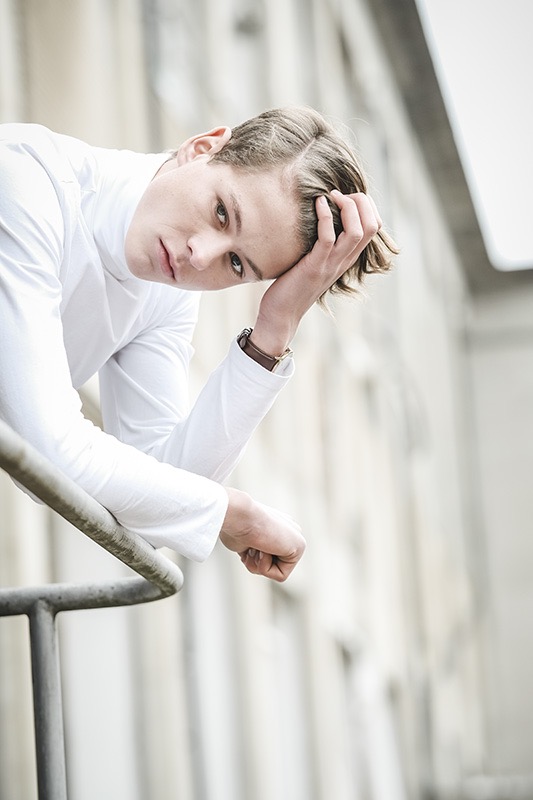I was a bit sceptical when I saw the new Fujifilm X-H1 for the first time in December 2017. I was holding a camera in my hand that is almost as big as my old Nikon D3. The camera size was one of the reasons why I actually had switched to Fujifilm in the first place. My X-T1, even with a battery grip, was small, light and inconspicuous. And even with the X-T2 this hasn’t changed. Now there is a new camera, which is almost exactly the opposite of the current Fujifilm X concept, something between X-T2 and GFX50S.
But it was already clear at the time that it would have an interesting element, IBIS – the stabilizer in the camera. Suddenly the combination camera with XF 16-55mm was exciting again. I could not test then how good the stabilizer is, but hopefully the possibility would come up soon?
Less than a month later I hold the Fujifilm X-H1 in my hands again. In the meantime the camera has gotten newer firmware, but of course the size hasn’t changed. Since I had a little more time with the camera this time, I tried to make sure that the first, perhaps a little less positive impression from December didn’t gain too much the upper hand.
Since the camera has been released now, I will not go into the technical details too much. The Fujifilm X-H1 main specifications are:
– 5-axis hand shake correction with effect of up to 5.5 steps
– Electronic front curtain shutter, electronic shutter
– 24.3 MP, X-Trans CMOS III sensor
– X-Processor PRO
– a rugged magnesium alloy body
– EVF is 3.69 million dots, the maximum framelet is 100 fps, the response is 0.005 seconds
– 3 inch 1.04 million dot touch type liquid crystal monitor
– Film Simulation ETERNA
– Cinema 4K 24 fps, 4 K 30 fps
– 120 fps slow motion video in full HD
– F-log (can be recorded on F-Log directly to SD card at 4K)
– Video bit rate up to 200 Mbps
– Built-in high-performance microphone
– Improvement of AF algorithm
– ISO 200 – 12800 (ISO100, 25600, 51200 in extension)
– Dual card slot
– Wifi
– size 139.8 x 97.3 x 85.5
– Weight 623 g (including battery 673 g)
A deeper technical review can be found on the blog of Jonas Rask, who is as well a Fujifilm X-Photographer, and the master behind all the Fujifilm product shots.
I will concentrate here more on my practical experiences during the various shootings with the camera. The focus of my photography is on music and people. I think that in this area, the camera can certainly shine. But before we go into the details, a small disclaimer. I am an official Fujifilm X-Photographer, as Fujifilm calls their brand ambassadors. This report is based on my own opinion and is not aligned with Fujifilm. You might want to keep that in mind when reading the following lines.
Ergonomics
Of course, I will return to the question of size. Yes, the X-H1 is larger than a X-T1 or a X-T2, which also has to do with the second display it inherited from the GFX. But once you’ve started taking pictures with the X-H1, it doesn’t distract you too much. Even with slightly smaller hands, all control elements can be easily reached and the camera is well balanced in the hand. Surprisingly, despite the size, the difference in weight to the X-T2 is not too big, even if the battery grip is attached to both cameras. Nevertheless, after a long shooting you have a small workout for your arms.
Speaking of the second display, I couldn’t do that much with it during my test shooting or I haven’t found the right use for it yet. The second display can be switched between photo and film mode. Maybe it’s handy to have the most important information on an “external” display while filming, but I wouldn’t have needed it personally for taking pictures.
There are, however, still two small things that I would like to have changed in a successor model of the X-H1. The AF-On Button (AF-L button at the X-T2) is a bit too far left in my opinion. I would have liked to have the same arrangement as the X-T2 (AE-L, rear dial, AF-L). Since the rear handle is slightly larger, the functional aspect of the AF-On button is lost with the arrangement of the X-H1. In addition, I find the position of the Q button directly on / at the back handle a bit unfortunate. During the shootings I accidentally hit the Q-Button several times and suddenly I had the Q-Menu in the viewfinder. With the size of the camera, an identical or at least similar arrangement as with the X-T2 (above the focus joystick) would have been probably possible without any problems.
Performance
The big highlight of the new X-H1 is the built-in image stabilizer (IBIS). Many will say right now that they didn’t need it. I was one of them at first. The “most important” lenses of the Fujinon line-up already have an image stabilizer (OIS) and thus compensate for up to 5 f-stops. With this you can take such pictures with one fourth of a second handheld (actually taken with the Fujifilm X-T1 and the XF50-140mm).

However, there are still some lenses that do not have an image stabilizer, such as the XF 16-55mm or XF 90mm. For the these lenses the image stabilizer in X-H1 is a welcome addition. The image stabilizer of the X-H1 can compensate for up to 5.5 f-stops. The stabilization can be easily controlled via the menu and has 3 levels (Off, Shooting only and Permanent). During the test shootings, the stabilizer was always in the “permanent” mode, so that the focus was on taking pictures. In any case, the support lies within the specified range of up to 5.5 f-stops, so that such shots with lenses without OIS are now also possible handheld (both pics taken at 1.3 seconds, first one with, second one without IBIS; both with XF 16-55 mm, taken by Oliver Moser):
with IBIS

without IBIS

But IBIS is not only great for XF lenses. All of a sudden, all the Vintage lenses have a stabilizer. How many f-stops it will support I could unfortunately not test though. I didn’t try out either how IBIS behaves during filming. But we will certainly get the first reviews for this soon.
What is also noticeable is that the autofocus has also received a performance boost. Compared to the X-T2, with the latest firmware, lenses like the XF 35 f/1.4 and XF 56mm f/1.2 focus faster. With XF 56mm this is even the case in darker environments, which have been somewhat problematic for this lens so far.
Does this have an effect on the battery? Subjectively, there has also been an improvement in battery consumption. After one day of shooting (IBIS in “Permanent” mode) with approx. 900 shots, one battery in the battery grip was empty, the second one was used up to 75% and the battery in the camera was still completely full. This means that now also acceptable number of shots can be achieved, even if it is still the same battery as in the X-T2. Surely we are still a long way from the figures of a DSLR, but it is definitely heading in the right direction.
Other details
What is still noteworthy? The EVF has become even bigger. It is now the same size as the GFX, but with less magnification. Actually the magnification of the X-T2 is still slightly better. Anyone who knows the GFX viewfinder however will agree that this is a welcome improvement.
As far as the action photographers are concerned, they can enjoy a black out free image in the viewfinder or on the back screen when shooting at a high frame rates.
It is already a tradition that with almost every new camera series a new film simulation is introduced. The X-H1 has the film simulation “Eterna”. The basis for this is the old Fujifilm colour negative film for cinematographic films, which was known for its ultra-fine grain, natural skin tones and excellent gray balance. So you can give your pictures a soft film look, as you can see in this example directly from the camera:

The X-H1 also features a touch screen for the rear display, which has the same shooting and playback modes as the GFX and the recently introduced X-E3.
Furthermore, the X-H1 has numerous other innovations and improvements. Listing them all here would certainly go beyond the scope of this post. What should be emphasized nevertheless are the 6 shutter mechanisms. For example, the X-H1 can now be used with an electronic shutter with Front Curtain Shutter, which is one of the reasons for the black out free viewfinder when shooting with a high frame rate.
A handy detail hidden in the Setting menu is the creation of folders on the memory card. This makes it easy to organize the pictures before or during shootings. And transferring files to the computer is made easier.
In addition, the X-H1 now also has Bluetooth support, as it is already known from the X-E3. This simply offers an additional possibility to connect the camera to the Fujifilm Camera Remote App.
Summary
So how does the judgement turn out now after the somewhat longer second try? To be honest, I was a little surprised that Fujifilm has already introduced a new camera. I had expected something new at a later date this year. And yes, it is a new camera. Initially I thought the Fujifilm X-H1 will be an improved X-T2, but it is definitely more. Personally, I still find the size a bit too big. Even without the battery grip we are now close to a DSLR. But this and the already mentioned small ergonomic corrections are then also the only “blemishes” in the X-H1 for me. Its all new magnesium alloy body, faster autofocus, built-in image stabilizer are just as convincing as the larger viewfinder. I will probably also focus more on filming in the future, because the X-H1 is predestined for this. Actually, I didn’t want to return the X-H1 after trying it out. So I have to wait now until the beginning of March when I get my own Fujifilm X-H1. And I’m looking forward to it!
Here are some more pictures that I have taken during the shootings with the X-H1 (and remember they were all shot with a prototype of the X-H1):








2 Comments